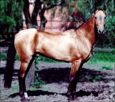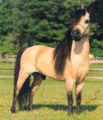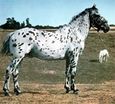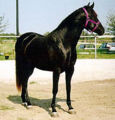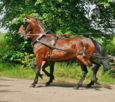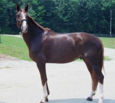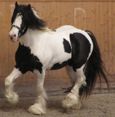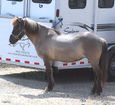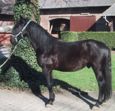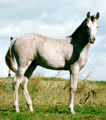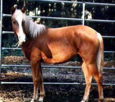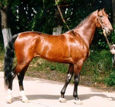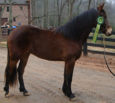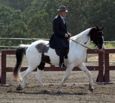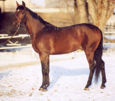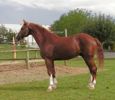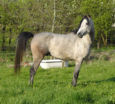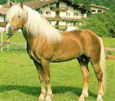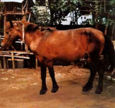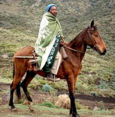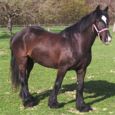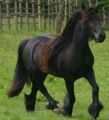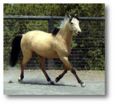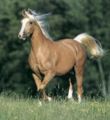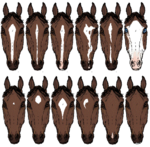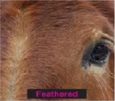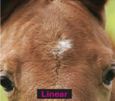Difference between revisions of "Equine Breeds - WikiNormals"
| (14 intermediate revisions by 3 users not shown) | |||
| Line 1: | Line 1: | ||
| − | {{ | + | {{OpenPagesTop}} |
| − | |||
| − | |||
| − | |||
| − | |||
| − | |||
| − | |||
| − | }} | ||
==Introduction== | ==Introduction== | ||
*Due to the extensive number of horse breeds worldwide, the sample below includes those found in the UK and/or Europe. A Breed Society exists for most of the breeds listed below. A list of many of these societies can be found at http://www.worldofhorses.co.uk/Breeds/Breed_Society_List.htm | *Due to the extensive number of horse breeds worldwide, the sample below includes those found in the UK and/or Europe. A Breed Society exists for most of the breeds listed below. A list of many of these societies can be found at http://www.worldofhorses.co.uk/Breeds/Breed_Society_List.htm | ||
| Line 12: | Line 5: | ||
*Some of the breeds noted below come in a variety of colours. Where this is the case the picture is labelled with 'Various Colours'. Where possible the size of the horse has also been indicated. | *Some of the breeds noted below come in a variety of colours. Where this is the case the picture is labelled with 'Various Colours'. Where possible the size of the horse has also been indicated. | ||
| − | + | ==Horses== | |
<gallery widths="115px" perrow="5"> | <gallery widths="115px" perrow="5"> | ||
Image:Akhal-Teke_Horse.jpg|'''Akhal-Teke'''<br> ''(Various Colours)'' <br> 15.1-15.2hh <br> WikiCommons | Image:Akhal-Teke_Horse.jpg|'''Akhal-Teke'''<br> ''(Various Colours)'' <br> 15.1-15.2hh <br> WikiCommons | ||
| Line 60: | Line 53: | ||
Image:Oldenburg.jpg|'''Oldenburg (German)'''<br> ''(Brown, black and bay)'' <br> 16-17hh <br> WikiCommons | Image:Oldenburg.jpg|'''Oldenburg (German)'''<br> ''(Brown, black and bay)'' <br> 16-17hh <br> WikiCommons | ||
Image:Orlov_Trotter.jpg|'''Orlov'''<br> ''(Grey or black)'' <br> 15.2-17hh <br> worldofhorses.co.uk | Image:Orlov_Trotter.jpg|'''Orlov'''<br> ''(Grey or black)'' <br> 15.2-17hh <br> worldofhorses.co.uk | ||
| − | Image:Palamino.JPG|''' | + | Image:Palamino.JPG|'''Palomino'''<br> ''(Various Shades)'' <br> 14-17hh <br> WikiCommons |
Image:Peruvian_Paso.jpg|'''Peruvian Paso'''<br> ''(Bay and Chestnut most common)'' <br> 14-15.2hh <br> worldofhorses.co.uk | Image:Peruvian_Paso.jpg|'''Peruvian Paso'''<br> ''(Bay and Chestnut most common)'' <br> 14-15.2hh <br> worldofhorses.co.uk | ||
Image:Pinto.jpg|'''Pinto'''<br> 14.2-15.2hh <br> WikiCommons | Image:Pinto.jpg|'''Pinto'''<br> 14.2-15.2hh <br> WikiCommons | ||
| Line 78: | Line 71: | ||
</gallery> | </gallery> | ||
| − | + | ==Horses (Cold-Blood)== | |
<gallery widths="115px" perrow="5"> | <gallery widths="115px" perrow="5"> | ||
Image:BelgianDraft.jpg|'''Belgian Draft''' <br> ''(Chestnut, Sorrel or Roan)'' <br> 15.3-17hh <br> worldofhorses.co.uk | Image:BelgianDraft.jpg|'''Belgian Draft''' <br> ''(Chestnut, Sorrel or Roan)'' <br> 15.3-17hh <br> worldofhorses.co.uk | ||
| Line 92: | Line 85: | ||
</gallery> | </gallery> | ||
| − | + | ==Horses (Hot-Blood)== | |
<gallery widths="115px" perrow="5"> | <gallery widths="115px" perrow="5"> | ||
Image:Arab.jpg|'''Arabian'''<br> ''(Chestnut, grey, bay and black)'' <br> 14.2-15.hh <br> WikiCommons | Image:Arab.jpg|'''Arabian'''<br> ''(Chestnut, grey, bay and black)'' <br> 14.2-15.hh <br> WikiCommons | ||
| Line 99: | Line 92: | ||
</gallery> | </gallery> | ||
| − | ===Ponies | + | {{toplink |
| + | |linkpage =WikiNormals | ||
| + | |linktext =WikiNormals | ||
| + | |||
| + | |pagetype =WikiNormals | ||
| + | |sublink1= Equine Section - WikiNormals | ||
| + | |subtext1= Equine Section | ||
| + | }} | ||
| + | {{OpenPages}} | ||
| + | ==Ponies== | ||
<gallery widths="115px" perrow="5"> | <gallery widths="115px" perrow="5"> | ||
Image:Avelignese_pony.jpg|'''Avelignese'''<br> 13.3-14.3hh <br> worldofhorses.co.uk | Image:Avelignese_pony.jpg|'''Avelignese'''<br> 13.3-14.3hh <br> worldofhorses.co.uk | ||
| Line 136: | Line 138: | ||
</gallery> | </gallery> | ||
| − | + | ==Other== | |
<gallery widths="115px" perrow="5"> | <gallery widths="115px" perrow="5"> | ||
Image:Donkey.jpg|'''Donkey'''<br> ''(Various Colours/Type)'' <br> ''62 Chromosomes'' <br> WikiCommons | Image:Donkey.jpg|'''Donkey'''<br> ''(Various Colours/Type)'' <br> ''62 Chromosomes'' <br> WikiCommons | ||
| Line 143: | Line 145: | ||
</gallery> | </gallery> | ||
| − | + | ==Horse Passports== | |
Horse Passports (England) Regulations (2004) require all owners to obtain a passport for each animal they own. This includes ponies, donkeys, and other equidae. Owners cannot sell, export, slaughter for human consumption, use for the purposes of competition or breeding, a horse which does not have a passport. | Horse Passports (England) Regulations (2004) require all owners to obtain a passport for each animal they own. This includes ponies, donkeys, and other equidae. Owners cannot sell, export, slaughter for human consumption, use for the purposes of competition or breeding, a horse which does not have a passport. | ||
For further information on filling out a Horse Passport, please see; http://www.horsepassportagency.co.uk | For further information on filling out a Horse Passport, please see; http://www.horsepassportagency.co.uk | ||
| − | + | ==Standard Horse Colours== | |
'''Principle Colours''' ''(Section A - Colours Commonly Occurring in Thoroughbreds):'' | '''Principle Colours''' ''(Section A - Colours Commonly Occurring in Thoroughbreds):'' | ||
*'''Bay''' : Reasonably clearly defined colour between black lower part of legs and the general tan/brown colour of upper legs and body. Mane and tail are black. | *'''Bay''' : Reasonably clearly defined colour between black lower part of legs and the general tan/brown colour of upper legs and body. Mane and tail are black. | ||
| Line 175: | Line 177: | ||
*'''Skewbald''' : Body colour has large irregular patches of white and any definite colour except black. Demarcation of colours well defined. | *'''Skewbald''' : Body colour has large irregular patches of white and any definite colour except black. Demarcation of colours well defined. | ||
*'''Odd Coloured''' : Body consists of large irregular patches of more than two colours which may merge into each other at edges. | *'''Odd Coloured''' : Body consists of large irregular patches of more than two colours which may merge into each other at edges. | ||
| − | *''' | + | *'''Palomino''' : Body is newly-minted gold-coin colour. Lighter/darker patches permissable. White mane and tail. |
*'''Appaloosa''' : Basic body colour is usually roan with varyinng mosaic of spots. May be dark spots on white, white spots on dark ground. Covers part of all of body. | *'''Appaloosa''' : Basic body colour is usually roan with varyinng mosaic of spots. May be dark spots on white, white spots on dark ground. Covers part of all of body. | ||
<gallery widths="115px" perrow="5"> | <gallery widths="115px" perrow="5"> | ||
| Line 190: | Line 192: | ||
</gallery> | </gallery> | ||
| − | + | ==Standard Horse Passport Markings== | |
| − | + | ===White Markings=== | |
Any white marking must be outlined in red, lightly hatched in with diagonal lines. | Any white marking must be outlined in red, lightly hatched in with diagonal lines. | ||
[[Image:HorseFaceMarkings.png|thumb|right|150px|Horse Face Markings <br> (WikiCommons)]] | [[Image:HorseFaceMarkings.png|thumb|right|150px|Horse Face Markings <br> (WikiCommons)]] | ||
| Line 210: | Line 212: | ||
</gallery> | </gallery> | ||
| − | + | ===Whorls=== | |
Formed by changes in direction of flow of hair. | Formed by changes in direction of flow of hair. | ||
*'''Simple''' : Focal point from which hairs diverge. Show as 'X'. | *'''Simple''' : Focal point from which hairs diverge. Show as 'X'. | ||
| Line 224: | Line 226: | ||
</gallery> | </gallery> | ||
| − | + | ===Other Characteristics=== | |
*'''Acquired Marks''' : Permanent and usually seen as white hairs such as saddle, bridle, collar, girth, branding, surgery and tatoo marks. Should be described in narrative and with an arrow on the diagram. | *'''Acquired Marks''' : Permanent and usually seen as white hairs such as saddle, bridle, collar, girth, branding, surgery and tatoo marks. Should be described in narrative and with an arrow on the diagram. | ||
*'''Microchip Site''' : Usually found in middle third of left crest. Any site differing from this should be indicated and described in narrative. | *'''Microchip Site''' : Usually found in middle third of left crest. Any site differing from this should be indicated and described in narrative. | ||
| Line 246: | Line 248: | ||
</gallery> | </gallery> | ||
| − | + | ==References== | |
Department for Environment, Food and Rural Affairs (DEFRA); http://www.defra.gov.uk/rural/horses/topics/passports.htm | Department for Environment, Food and Rural Affairs (DEFRA); http://www.defra.gov.uk/rural/horses/topics/passports.htm | ||
Latest revision as of 19:01, 19 December 2019
Introduction
- Due to the extensive number of horse breeds worldwide, the sample below includes those found in the UK and/or Europe. A Breed Society exists for most of the breeds listed below. A list of many of these societies can be found at http://www.worldofhorses.co.uk/Breeds/Breed_Society_List.htm
- Some of the breeds noted below come in a variety of colours. Where this is the case the picture is labelled with 'Various Colours'. Where possible the size of the horse has also been indicated.
Horses
- Error creating thumbnail: File missing
Selle Français
(Mainly Chestnut)
15.2-17hh
WikiCommons
Horses (Cold-Blood)
Horses (Hot-Blood)
|
|
Error in widget FBRecommend: unable to write file /var/www/wikivet.net/extensions/Widgets/compiled_templates/wrt6936ee2fc3a213_72382976 Error in widget google+: unable to write file /var/www/wikivet.net/extensions/Widgets/compiled_templates/wrt6936ee2fcb1176_09507685 Error in widget TwitterTweet: unable to write file /var/www/wikivet.net/extensions/Widgets/compiled_templates/wrt6936ee2fd0f324_99024080
|
| WikiVet® Introduction - Help WikiVet - Report a Problem |
Ponies
- Error creating thumbnail: File missing
Galiceño
(Any solid colour)
Up to 14hh
worldofhorses.co.uk
Other
Horse Passports
Horse Passports (England) Regulations (2004) require all owners to obtain a passport for each animal they own. This includes ponies, donkeys, and other equidae. Owners cannot sell, export, slaughter for human consumption, use for the purposes of competition or breeding, a horse which does not have a passport.
For further information on filling out a Horse Passport, please see; http://www.horsepassportagency.co.uk
Standard Horse Colours
Principle Colours (Section A - Colours Commonly Occurring in Thoroughbreds):
- Bay : Reasonably clearly defined colour between black lower part of legs and the general tan/brown colour of upper legs and body. Mane and tail are black.
- Brown : Whole coat is brown and no distinguishing colour line between upper and lower leg.
- Black : Whole coat including legs, body, stifle fold and muzzle must be black. Any indication of tan in coat, stifle fold or muzzle should classify horse as brown.
- Chestnut : Coat is reddish or yellowish brown. Mane and tail are chestnut and may be lighter and darker than the body colour.
- Grey : Coat mixture of black and white hairs with black skin. With age coat will turn lighter but still termed grey. Majority of grey horses not grey as foals and should be described by predominant colour at the time but any white hairs should be noted in narrative.
- Roan : Body colour mixture of white, brown or chestnut and intensity variable seasonally. Although acceptable, Roan is rare in Thoroughbreds as most are actually in transition to grey. Roan examples are within the 'Other Colours' section.
Other Colours (Section B - Acceptable Colours not commonly occuring in Thoroughbreds):
- Blue Roan : Body colour black or black-brown with any mixture of white hairs giving blue tinge. Black hairs usually predominate on head and from knee or hock down. Some white limb markings also may occur.
- Red Roan : Body colour is bay or bay-brown with any mixture of white hairs giving reddish tinge to coat. Bay hairs usually predominate head. From knees or hock below black usually predominates although white markings may occur.
- Strawberry or Chestnut Roan : Body colour is chestnut with any mixture of white hairs. Chestnut usually predominates head and below knees or hock. White markings may be encountered.
- Blue Dun : Body colour between slate grey to light stone and always evenly distributed. Mane and tail are black. May or may not be dorsal stripe along back and/or withers. Skin is black.
- Yellow Dun : Diffuse yellow pigment in hair. May or may not be dorsal stripe along back and/or withers and bars on legs. Striping usually associated with black pigment on head and limbs. Black skin.
- Cream : Body colour is cream with unpigmented skin. Iris is deficient in pigment giving eye pinkish or bluish appearance.
- Piebald : Body colour has large irregular patches of black and white. Demarcation of colours well defined.
- Skewbald : Body colour has large irregular patches of white and any definite colour except black. Demarcation of colours well defined.
- Odd Coloured : Body consists of large irregular patches of more than two colours which may merge into each other at edges.
- Palomino : Body is newly-minted gold-coin colour. Lighter/darker patches permissable. White mane and tail.
- Appaloosa : Basic body colour is usually roan with varyinng mosaic of spots. May be dark spots on white, white spots on dark ground. Covers part of all of body.
Standard Horse Passport Markings
White Markings
Any white marking must be outlined in red, lightly hatched in with diagonal lines.
- Star: Any mark on the forehead. Described by shape, size and position in relation to eyes and midline.
- Stripe : Narrow white marking down bridge of nose. Star and stripe can be joined. If gap in stripe, then described as interrupted stripe. Where stripe is seperate from star, or no star is present, its point of origin should be indicated. Should also describe thickness, position on face and termination point of stripe.
- Blaze : White marking covering almost whole of the forehead between eyes and extending beyond width of the bridge of the bridge of nose onto face and usually muzzle. Any variations and termination should be noted.
- White Face : White covers forehead and front of face extending towards the mouth.
- Snip : Isolated marking/s situated between or in the region of the nostrils. Size, position and intensity should be specified along with any associated skin markings.
- Lip Markings : Should be described as whole or portion of either lip.
- White Muzzle : White embraces both lips and extends to region of nostrils.
Whorls
Formed by changes in direction of flow of hair.
- Simple : Focal point from which hairs diverge. Show as 'X'.
- Linear : Two opposing sweeps of hair meet from opposite directions along a line. Show as a line.
- Feathered : Two sweeps of hair diverge along a line but the direction of flow of each sweep is at an angle to the other to form a feathered pattern. Show as 'X---' with line indicating the direction of feathering.
- Head Whorls : Position of head should be clearly specified with reference to midline, eye level, white markings and to each other.
- Neck Whorls : Neck is divided into three parts - upper, mid and lower. Should be described by their proximity to crest, neck, jugular groove and windpipe.
(All whorls should be sketched and described in narrative. Only exceptions are pectoral, stifle fold and forelock whorls which are almost universal and need not be recorded unless they are double, unusually situated, or abscent.
Other Characteristics
- Acquired Marks : Permanent and usually seen as white hairs such as saddle, bridle, collar, girth, branding, surgery and tatoo marks. Should be described in narrative and with an arrow on the diagram.
- Microchip Site : Usually found in middle third of left crest. Any site differing from this should be indicated and described in narrative.
- Wall Eye : Term used exclusively where there is a lack of pigment in the iris, either partial or complete. Gives a pinkish-white or bluish-white appearance to eye.
- Prophet's Thumb Mark : Muscular depression usually in neck, but also shoulders and hindquarters. Indicated by triangle and described in narrative.
- Mane and Tail : Differently coloured hairs in mane and tail should be indicated.
- Dorsal Stripe : Band of black hairs extending backwards from withers.
- Chestnuts : Common shapes are round, oval, pear-shaped, irregular pointed and notched. Shape of chestnuts may be useful in the absence of other identifying features. Not required to be recorded in animals with a microchip transponder.
Horse Passport Examples
References
Department for Environment, Food and Rural Affairs (DEFRA); http://www.defra.gov.uk/rural/horses/topics/passports.htm
